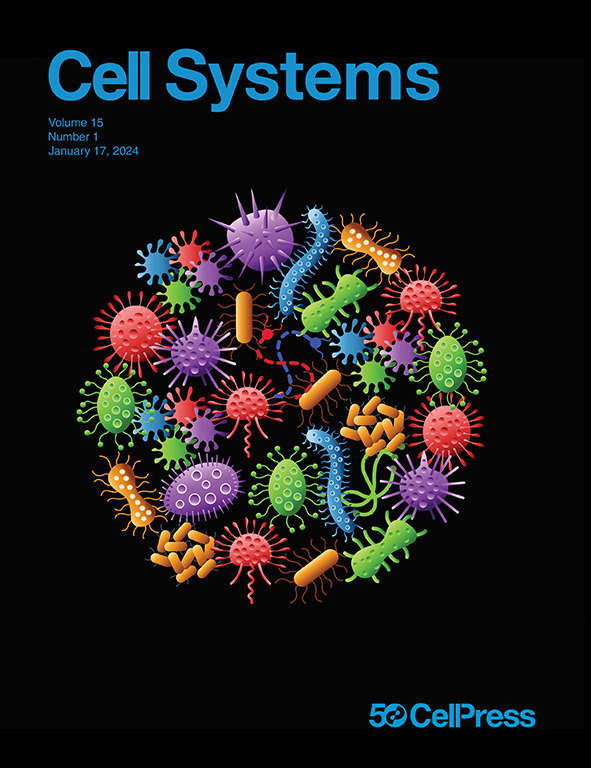显微镜下的基因相互作用。
IF 7.7
1区 生物学
Q1 BIOCHEMISTRY & MOLECULAR BIOLOGY
引用次数: 0
摘要
传统的遗传相互作用在总体水平上筛选表型,缺少可能影响特定状态下单细胞分布的相互作用。在这里,Heigwer和他的同事使用成像方法在果蝇细胞中生成了一个大规模的高分辨率遗传相互作用图,并证明了它在理解基因功能方面的实用性。本文章由计算机程序翻译,如有差异,请以英文原文为准。
Genetic interactions under the microscope.
Traditional genetic interaction screens profile phenotypes at aggregate level, missing interactions that may influence the distribution of single cells in specific states. Here, Heigwer and colleagues use an imaging approach to generate a large-scale high-resolution genetic interaction map in Drosophila cells and demonstrate its utility for understanding gene function.
求助全文
通过发布文献求助,成功后即可免费获取论文全文。
去求助
来源期刊

Cell Systems
Medicine-Pathology and Forensic Medicine
CiteScore
16.50
自引率
1.10%
发文量
84
审稿时长
42 days
期刊介绍:
In 2015, Cell Systems was founded as a platform within Cell Press to showcase innovative research in systems biology. Our primary goal is to investigate complex biological phenomena that cannot be simply explained by basic mathematical principles. While the physical sciences have long successfully tackled such challenges, we have discovered that our most impactful publications often employ quantitative, inference-based methodologies borrowed from the fields of physics, engineering, mathematics, and computer science. We are committed to providing a home for elegant research that addresses fundamental questions in systems biology.
 求助内容:
求助内容: 应助结果提醒方式:
应助结果提醒方式:


